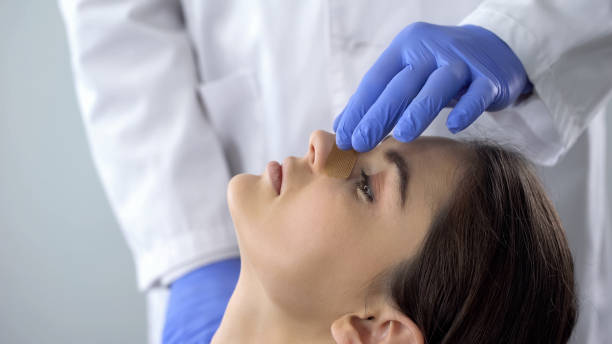Rhinoplasty, commonly known as a "nose job," is a popular cosmetic procedure that reshapes or resizes the nose to improve its appearance or function. Whether you're considering Rhinoplasty in Islamabadto enhance your facial features or to correct a medical issue, it's important to understand what the procedure involves, who it's suitable for, and what you can expect from the process.
What is Rhinoplasty?
Rhinoplasty is a surgical procedure that modifies the structure of the nose. It can be performed for cosmetic reasons, such as altering the shape, size, or proportions of the nose to better suit the individual's facial features. It can also be done for medical reasons, such as correcting a deviated septum or repairing nasal fractures that affect breathing.
The surgery can involve reshaping the bone, cartilage, or both, depending on the patient's needs. The goal is to create a natural-looking nose that is in harmony with the rest of the face while addressing any functional issues.
Why Do People Choose Rhinoplasty?
People opt for rhinoplasty for various reasons, which can generally be grouped into aesthetic and functional categories.
Aesthetic Motivations: Many people are dissatisfied with the appearance of their nose. Common concerns include a bump on the bridge, a drooping or bulbous tip, or a nose that is too wide or narrow. Rhinoplasty can help create a more balanced facial appearance by refining these features. For some, this can lead to increased self-esteem and confidence.
Functional Reasons: Rhinoplasty isn’t just about aesthetics. It can also address structural issues that impair breathing. A deviated septum, for instance, can cause chronic breathing difficulties, snoring, or even sleep apnea. In such cases, rhinoplasty can significantly improve the patient’s quality of life by enhancing airflow through the nostrils.
Who is a Good Candidate for Rhinoplasty?
Not everyone is an ideal candidate for rhinoplasty. The best candidates generally meet the following criteria:
Physical Maturity: Rhinoplasty should only be performed when the nose has fully developed, which typically occurs around the age of 16 for girls and 18 for boys. Performing the surgery too early can interfere with nasal growth and lead to complications.
Good Health: Candidates should be in good overall health, free from conditions that could impair healing or increase surgical risks. This includes being a non-smoker or willing to quit smoking for a period before and after surgery.
Realistic Expectations: It’s important for candidates to have realistic expectations about what rhinoplasty can achieve. While the procedure can enhance appearance and improve nasal function, it won’t transform your entire life. Having a clear and reasonable understanding of the potential results is crucial.
The Rhinoplasty Procedure
Rhinoplasty can be performed using two main techniques: open rhinoplasty and closed rhinoplasty.
Open Rhinoplasty: In this method, the surgeon makes an incision across the columella, the tissue between the nostrils, allowing the skin to be lifted off the tip of the nose. This provides better visibility of the nasal structures and is often used for more complex cases.
Closed Rhinoplasty: With this technique, all incisions are made inside the nostrils, which means no visible scarring. Closed rhinoplasty is less invasive and typically results in a shorter recovery time, but it may not be suitable for more extensive reshaping.
The surgery usually takes one to three hours, depending on the complexity of the procedure. It is typically performed under general anesthesia, ensuring the patient remains comfortable throughout.
Recovery and Results
Recovery after rhinoplasty varies from person to person but generally follows a predictable pattern.
Initial Recovery: Swelling and bruising around the nose and eyes are common in the first few weeks. Most patients can return to work or school within one to two weeks, although it may take several months for the swelling to fully subside.
Long-Term Healing: While you’ll notice improvements within a few weeks, the final results of rhinoplasty can take up to a year to fully manifest. The nose will continue to refine itself as the tissues settle and the swelling completely resolves.
Post-Operative Care: Following your surgeon’s post-operative instructions is crucial for a smooth recovery. This includes avoiding strenuous activities, keeping your head elevated, and not blowing your nose for the first few weeks.
Potential Risks and Complications
As with any surgical procedure, rhinoplasty carries certain risks. These may include infection, bleeding, scarring, or complications related to anesthesia. There's also the possibility that the results may not meet your expectations, potentially requiring revision surgery.
Choosing the Right Surgeon: To minimize risks, it's important to choose a board-certified plastic surgeon with extensive experience in rhinoplasty. A skilled surgeon will not only consider the aesthetics of your nose but also ensure that its function is preserved or improved.
Conclusion
Rhinoplasty can be a life-changing procedure for those looking to enhance their appearance or address functional issues with their nose. Whether you're motivated by cosmetic desires or medical needs, understanding the procedure, its risks, and its benefits is essential. By choosing a qualified surgeon and having realistic expectations, you can achieve a result that boosts your confidence and improves your overall quality of life. If you're considering rhinoplasty, consult with an experienced plastic surgeon to explore your options and make an informed decision





Comments